Transposition is essential skill for any aspiring musician. At their heart of it, transposition allows you to alter music so that it can be played on different instruments or in different ranges of pitch.
So let’s take a dive into how to transpose up a perfect fifth, both for music theory students and for musicians seeking to understand the concept of transposition
Need to transpose using another interval; check out all our transposition guides here.
Why transpose up a Perfect 5th?
The most common instrument we think about when transposing a perfect 5th is the French horn! This is because when the French horn plays a C we actually hear the F below. If you are listening to a piece of the French horn, then transposing it up a perfect 5th will give you the written pitch.
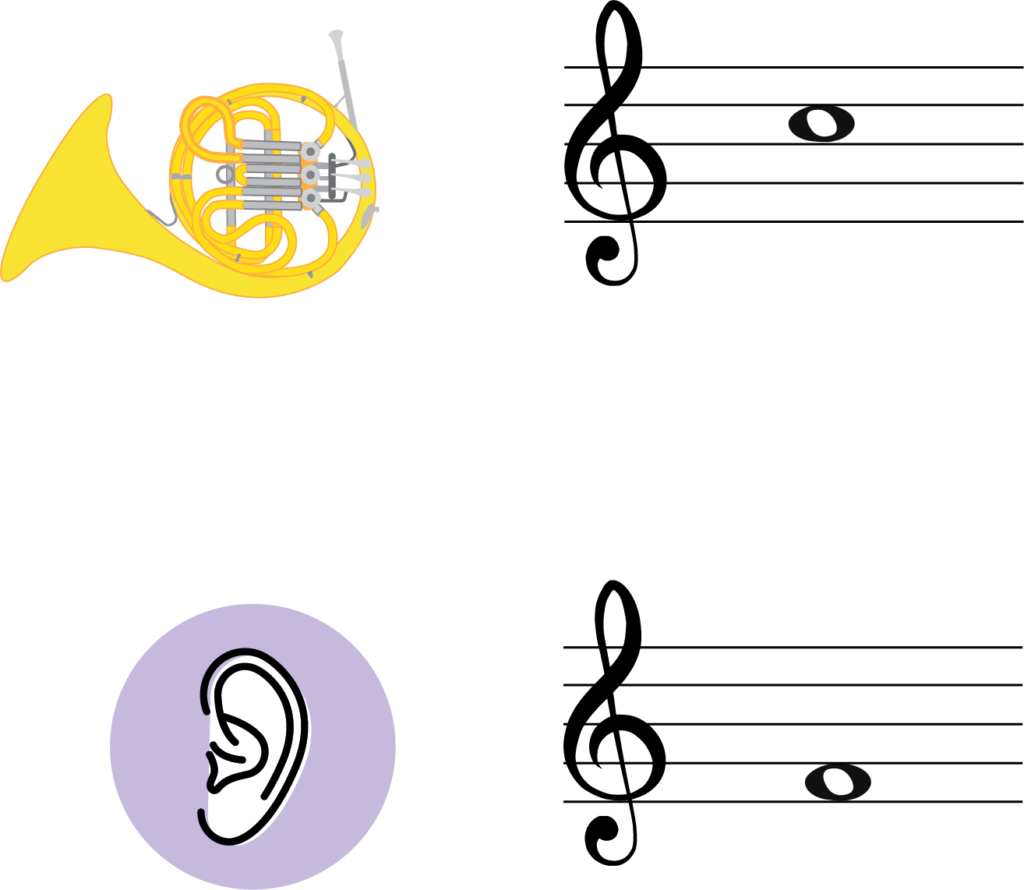
What is a Perfect 5th?
A perfect 5th interval is created when we move from the 1st degree of the scale to the 5th degree. The fifth called ‘perfect’ because of its simple nature and high degree of consonance between the notes. When you hear a 5th, it has a lot of stability.
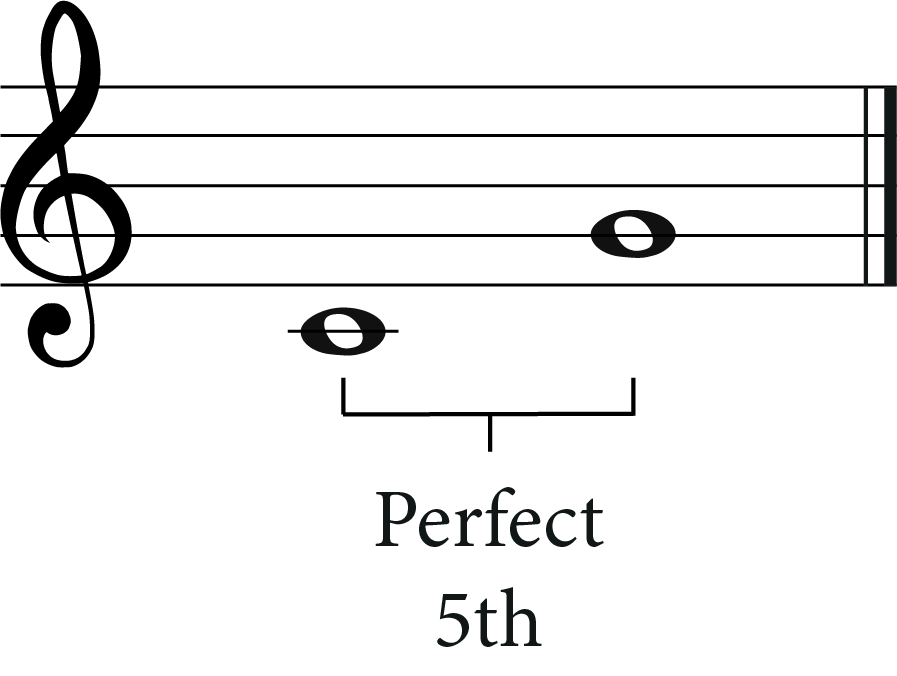
4th intervals are also called ‘perfect’ for the same reason.
For more on this, see our guide to perfect 5th intervals.
How to Transpose up a Perfect Fifth
This method has three steps:
- Transpose the key signatue up a perfect fifth
- Move all the notes up a fifth
- Deal with the accidentals
(If you thought we could transpose each note one at a time, click here to see why NOT to do this)
Remember we said that we transpose up a perfect 5th, we think about the French horn. This is because when the French horn plays a C, we hear an F.
Let’s think about that…
We see a C
We hear a F
Let’s write out the F major scale… What is the 5th note?

That’s correct it’s C!
As you read earlier, the 5th only has one normal state and that is perfect, so we know that this is a perfect 5th already. So in order to write out the written pitch (the note we hear), we must transpose up a perfect 5th.
Now we are clear with that.. Here is a short melody in C major. Let’s transpose it up a perfect 5th.

Step 1- Transpose the Key Signature
We have already worked out that if we transpose a C up a perfect 5th we get a G. This means that we now need to put the key signature of G major at the start of our melody.
The key signature of G major has one sharp.

G major key signature
Here it is in our melody.

- If you are still unclear on your key signatures, please make sure you are familiar with your Circle of Fifths.
Step 2- Move the notes up a 5th
Once you have changed your key signature, we then need to follow this with moving all the notes in the melody up a perfect 5th.

And we have our transposed melody! We can see what the written pitch is (what we see on the sheet music) when the French horn sounding pitch is in C Major.
There are no accidentals in this melody so no need for step 3 this time.
Example 2
What key is our melody in below?

That’s correct, we are in A major!
Step 1- Transpose the key signature
First let’s transpose the key signature. Can you transpose up a perfect 5th from A?

The fifth note above A is E. This means we now need the key signature of E major. How many sharps does E major have? 4!
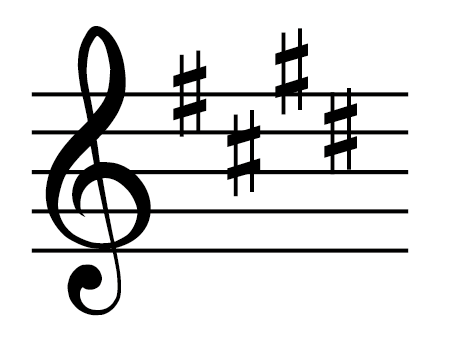
Here is the new key signature at the start of our melody.

Step 2- Move the Notes up a 5th
Now we have changed the key signature, simply move all of your notes up a 5th.

As you can see, we have not moved the D sharp note yet. This is because it is not in the notes of the original key signature and so will need to be treated differently.
You may also have spotted that the interval of a 5th matches perfectly with moving round the Circle of fifths!
Clue’s in the name….
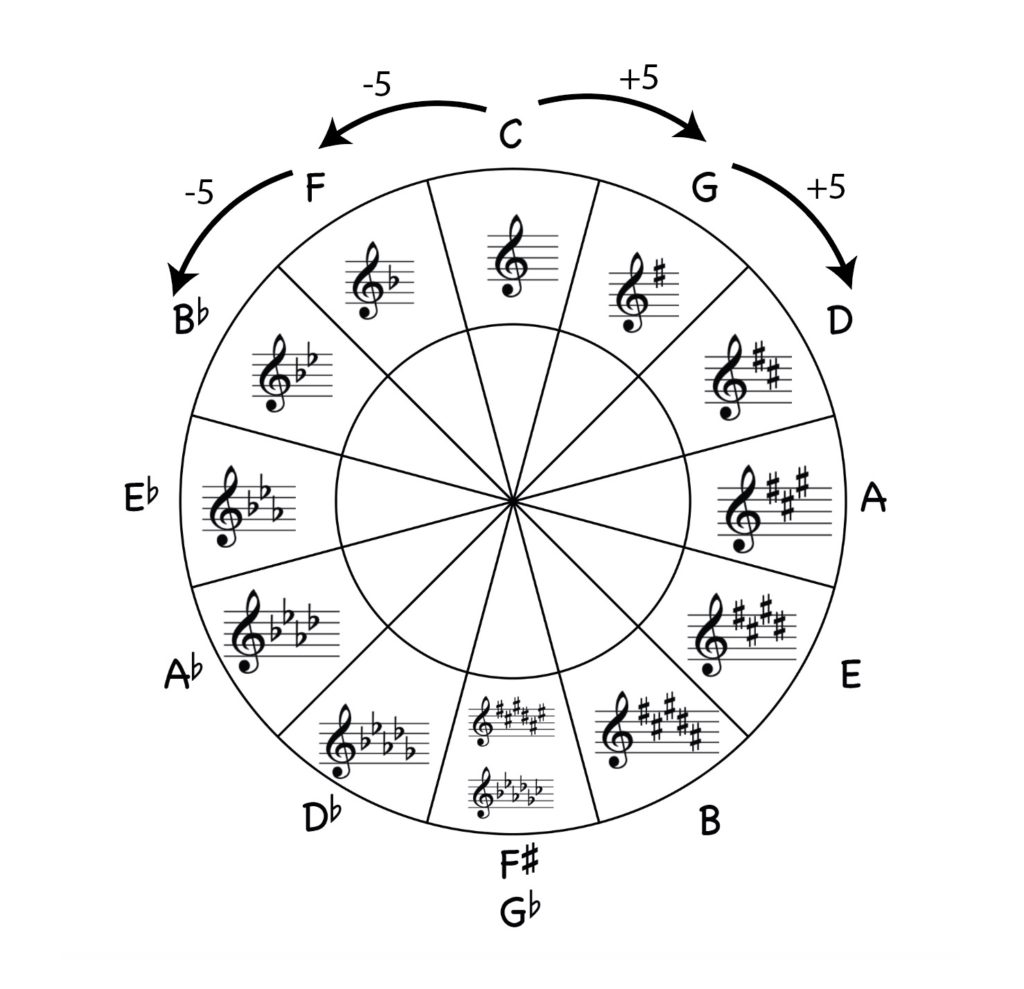
Step 3- Accidentals
In our original melody we have a D#. This note is not in the key of A major and so it will not be transposed correctly be the first 2 steps.
To transpose this note we treat it on its own. We can ask: what is a perfect fifth above D#? D# major would be a tricky key to work with so there are two ways to get around this problem.
The first method would be to lower the D# a half-step to D. Finding a perfect 5th above D is much easier: it is an A natural. Then raise the A back up half a step to correct it to A#.

The second method is to treat the D# as an Eb (its enharmonic equivalent). The key of Eb major is much easier to work in.
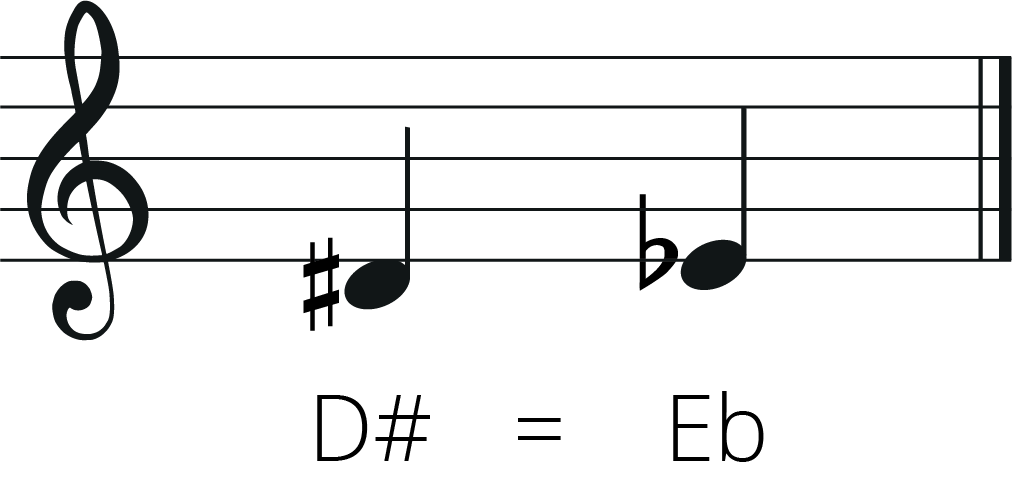
As you can see below, a 5th above Eb is Bb.
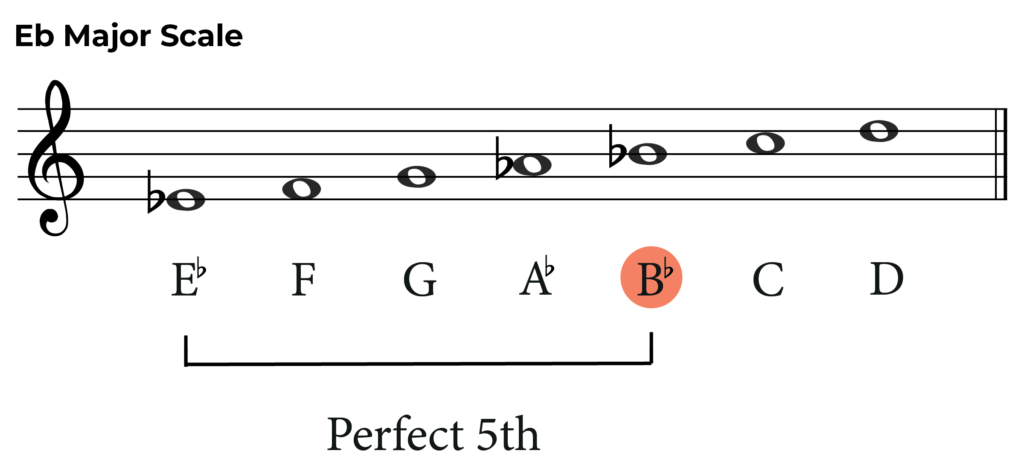
As we are working with a sharp key signature in the transposed melody (E major), we would use a sharp for this note. Bb would be written as an A#.
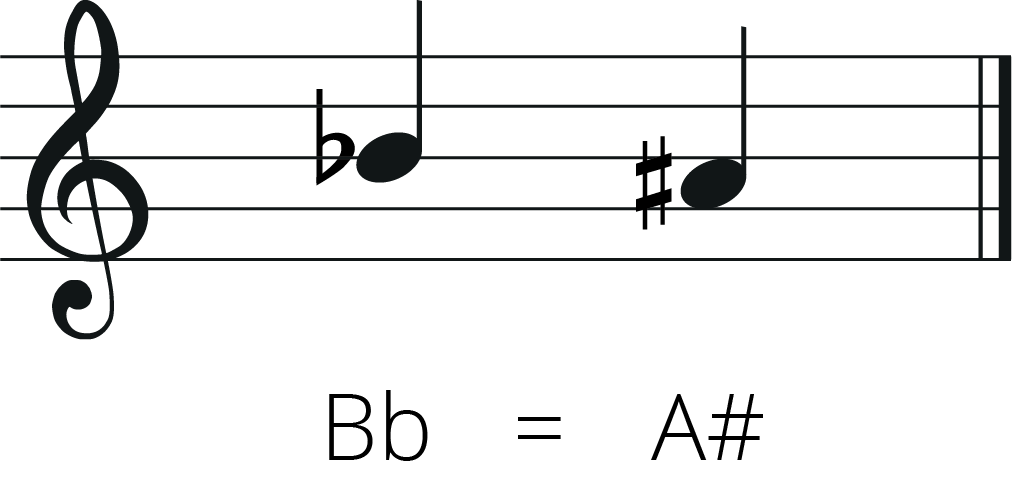
By treating notes outside the key individually we make sure that all notes are transposed correctly.
Here is our final transposition alongside the original melody.
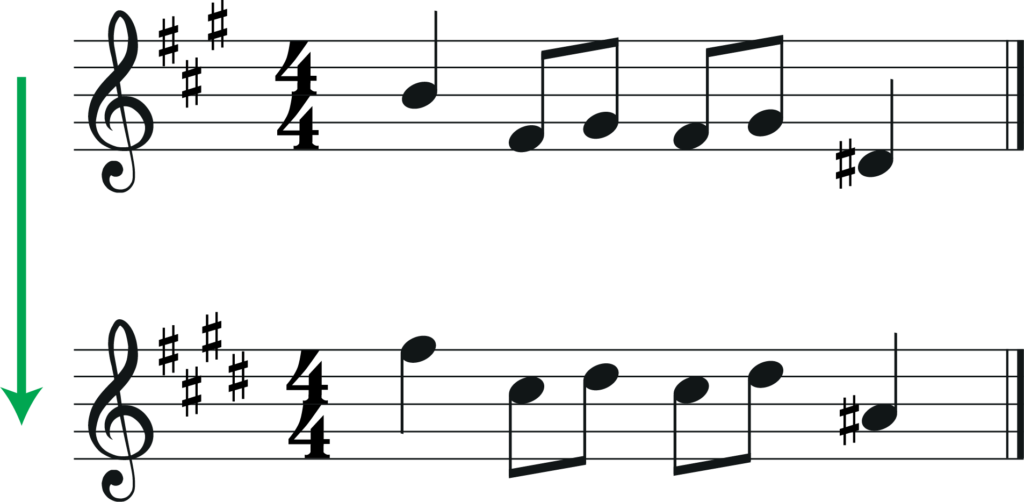
Can we transpose one note at a time?
This is the slowest method of transposing, but it works! Here we are going to move each note up a perfect 5th interval to create our transposed melody.

Remember that for each different note we need to count up a 5th in a different key. Because of this it can be way to make mistakes. You will also need to look at your notes to figure out the key signature for your new melody, otherwise you’ll have a lot of accidentals to read!
What’s next….?
- Learn how to transpose DOWN a perfect fifth
- Learn how to transpose by another interval.
- Learn more about intervals with our complete guide.
FAQs
How can I transpose sheet music up a perfect 5th automatically?
There are a variety of apps that can transpose sheet music such as Sibelius and Musescore.
What about transposing a piece in a minor key up a perfect 5th?
If you have a piece in a minor key then transposition works much the same. Remember that a minor piece will be transposed into another minor key if we move up a perfect 5th. (Similarly a piece with a major key signature will be transposed to another major key).
For example, a piece in A natural minor would be transposed into the key of E minor (one sharp – F#). This is because E natural is the 5th note of the A natural minor scale. In fact, E natural is also the 5th of the A major scale because perfect intervals are the same in both major and minor scales.
Important– beware of accidentals as these need to be treated independently. Scales such as the harmonic minor and melodic minor use additional accidental outside the key signature.
Why is the 5th called perfect?
Remember with the intervals of a 5th, 4th and octave we don’t use the descriptive words, ‘major’ or ‘minor’.
This is because these interval’s do not vary whether they are in the major or minor scales. This means that they only have one ‘normal’ state which is perfect!
Let’s have a look if we write out the C major scale below:

And then write out the C minor scale…

What do you notice about the 4th, 5th and 8th notes in both of these scales?
They are the same!
Let’s also look at the F scales… here is the F major scale:

Here is the F minor scale.

What do you notice? That’s right, the 4th 5th and 8th notes are the same!
